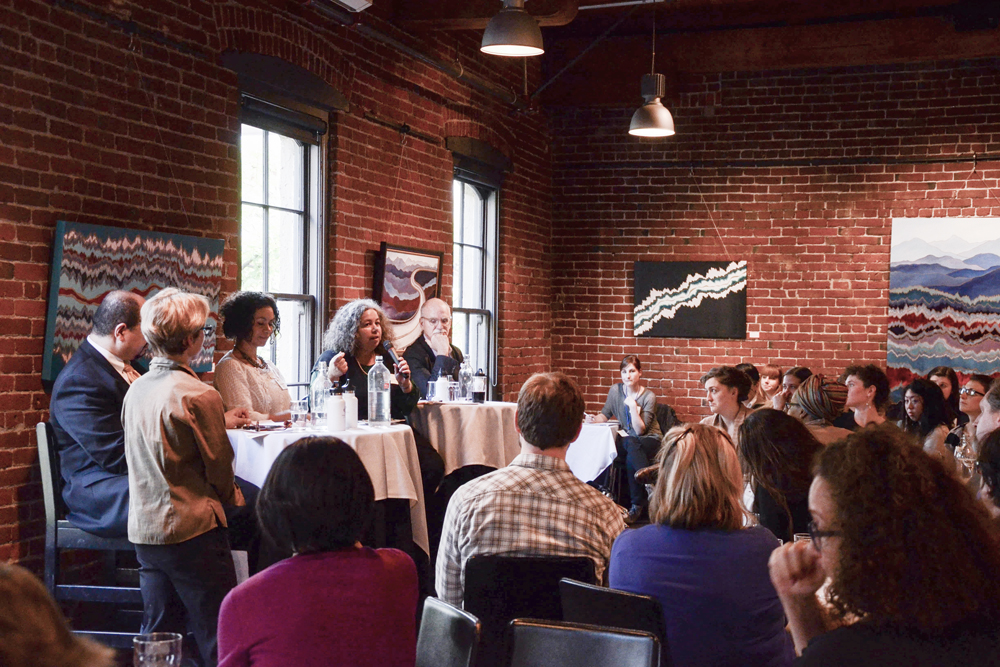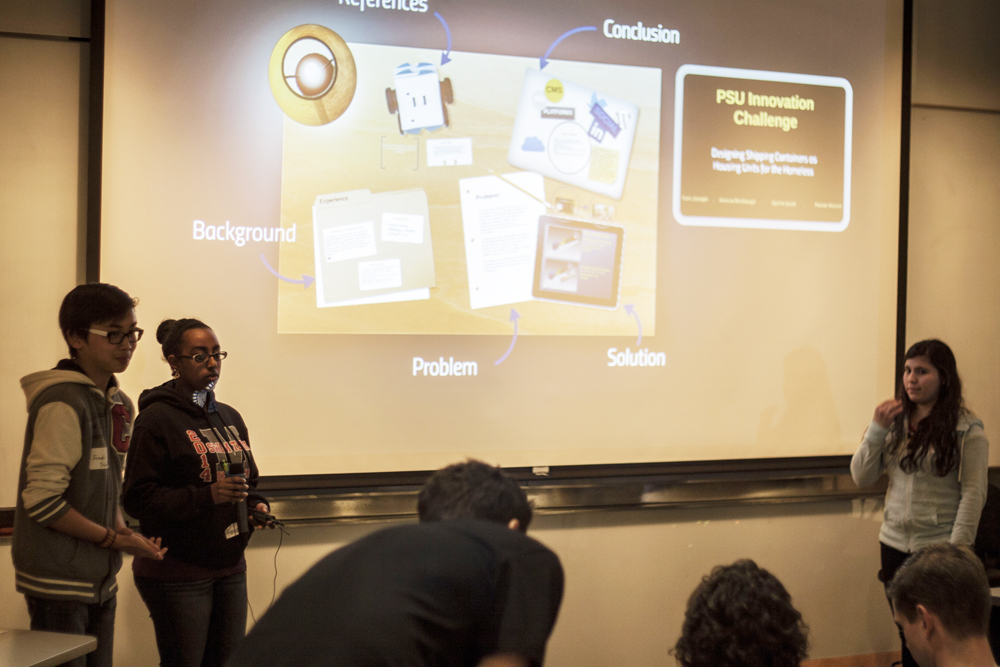The PSU Alumni Association and the Institute for Sustainable Solutions held a panel discussion on April 9 about gentrification and displacement in the Portland area. About 100 guests joined the discussion at Bridgeport Brewpub in Northwest Portland.
Four guest speakers shared their knowledge about urban development and talked about sustainable solutions: Cat Goughnour, Dr. Karen J. Gibson, Victor Merced and Joe Zehnder.
In February of this year, Governing Magazine published an article—based on a national study—that Portland is the city experiencing the most extensive gentrification in the nation. With 58 percent of eligible tracts gentrified, the city has the highest number of low-income, under-invested neighborhoods that became residencies for wealthier people.
Compared to the national rate, rent rates in Portland are increasing more than twice as quickly. The development is occurring across urban America and neighborhoods are changing significantly, with housing prices increasing enough to displace longtime residents.
“In Portland, this is mainly affecting the African and African-American population,” said Christina Williams, Communications Director at PSU’s Institute for Sustainable Solutions.
“Housing—sadly—is a business in terms of exploitation. The historic discrimination sets a platform,” said Dr. Gibson, Associate Professor of Urban Studies and Planning, who joined PSU’s Nohad A. Toulan School of Urban Studies and Planning at Portland State University in 1998.
Much of the discussion focused on livability and affordability in Portland, and a need for community developing. Panelists said the state and city governments’ plans, such as Portland’s Comprehensive Plan, aren’t enough for the situation. The plan is a long-range land use and public infrastructure investment plan from 2015 until 2035.
“Cities have to have plans how to create housing in order to keep the market in balance. And the ability to keep reinvesting in a place,” said Zehnder, who is a Chief Planner with the City of Portland.
The self-empowerment and the rebuilding of communities is enforced by Merced, Executive Director of the Latino Community Development Corporation Hacienda CDC, which supports families by providing affordable housing, home-ownership support, economic advancement and educational opportunities.
Goughnour—a human rights advocate who specializes in equity policy—would like to see more civil rights lawyers involved, in order to find a sustainable solution for the gentrification problem.
“We need more external support, more diversity in the communities,” she said. “I like the idea of empowering people. However, it’s necessary to understand the needs and to find the right people to implement those ideas.” According to Goughnour, the current housing circumstances violate civil rights.
Beyond the involvement of the nonprofit and public organizations in the process of finding solutions, Gibson said she would like to see a stronger participation from the for-profit business side: “Profit is primary, shelter secondary. As long as it’s that way, the situation remains the same.”





